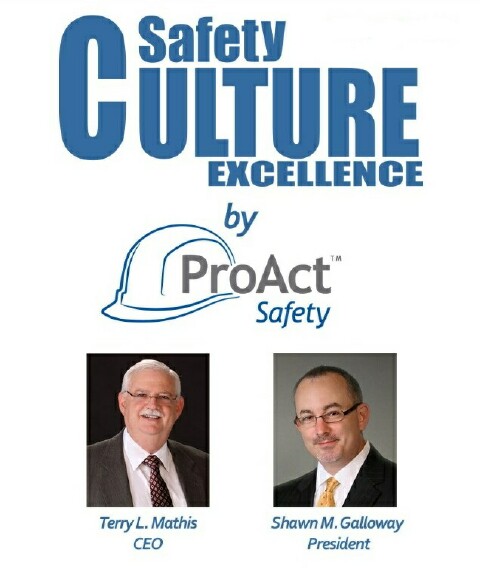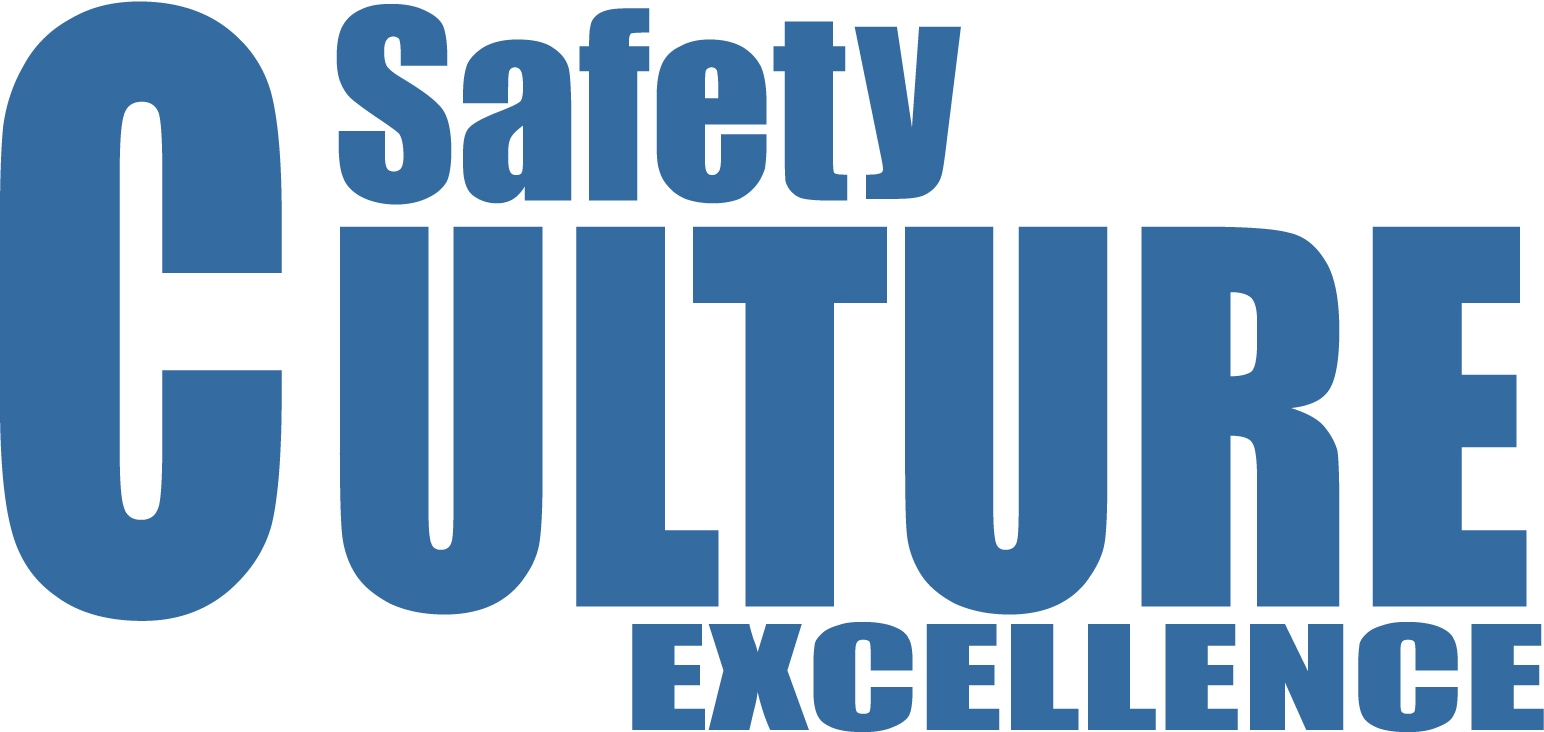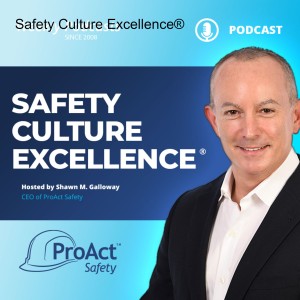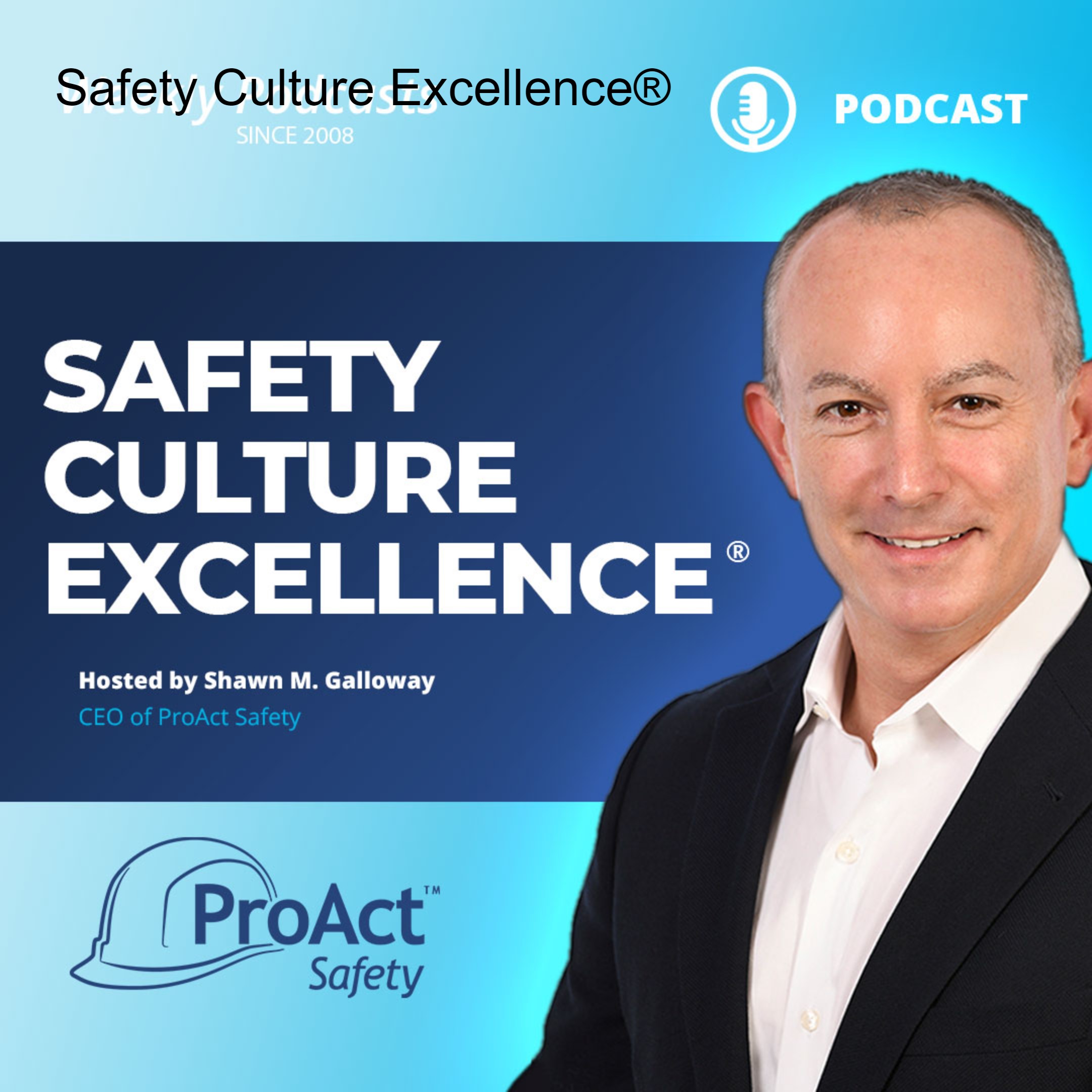Episodes

Wednesday Mar 26, 2014
Can-Do Safety Cultures
Wednesday Mar 26, 2014
Wednesday Mar 26, 2014
It is important to define the desired capabilities of a culture instead of simply the desired characteristics. What a culture “can do” is much more crucial than what it “is like.” That said, some cultures become can-do cultures without internalizing safety as a part of what they can do. Such cultures become “get it done at all costs” cultures. The members of the culture become willing to give their bodies up for the team. They put job completion ahead of all other priorities.
The history of a site can be a major influence in developing such a culture. Sites that have experienced multiple downsizing or threats of closing tend to develop work groups that perform for survival. The constant threat of being laid off or having your workplace closed tends to outweigh the threat of personal injury. If managers and supervisors constantly use these threats to motivate or hurry workers, the perception that production trumps safety is constantly reinforced.
When companies downsize, reorganize or otherwise disrupt site cultures, they should anticipate and manage the safety aspects of the change. Survival is an economic necessity, but poor safety can impact a site’s viability as much as ineffective or incomplete work. Survival mode should include both surviving the economic challenges and the safety issues. Again, it is not a dichotomy between production and safety, but addressing the need for safe production.
-Terry L. Mathis
Terry L. Mathis is the founder and CEO of ProAct Safety, an international safety and performance excellence firm. He is known for his dynamic presentations in the fields of behavioral and cultural safety, leadership, and operational performance, and is a regular speaker at ASSE, NSC, and numerous company and industry conferences. EHS Today listed Terry as a Safety Guru in ‘The 50 People Who Most Influenced EHS in 2010, 2011 and 2012-2013. He has been a frequent contributor to industry magazines for over 15 years and is the coauthor of STEPS to Safety Culture Excellence, 2013, WILEY.

Monday Mar 24, 2014
334 – Misunderstanding the Role of Safety Culture Assessments
Monday Mar 24, 2014
Monday Mar 24, 2014
Greetings everyone, this podcast recorded while in my home in Texas. I’d like to share an article I wrote that was published March 2014 in Occupational Health and Safety Magazine. The published article can either be found on the magazine’s website or under Insights at www.ProActSafety.com.
I hope you enjoy the podcast this week. If you would like to download or play on demand our other podcasts, please visit the ProAct Safety’s podcast website at: http://www.safetycultureexcellence.com. If you would like access to archived podcasts (older than 90 days – dating back to January 2008) please visit www.ProActSafety.com/Store. For more detailed strategies to achieve and sustain excellence in performance and culture, pick up a copy of our book, STEPS to Safety Culture Excellence - http://proactsafety.com/insights/steps-to-safety-culture-excellence
Have a great week!
Shawn M. Galloway
ProAct Safety

Monday Mar 03, 2014
331 - Profound Knowledge: What Drives Your Safety Strategy
Monday Mar 03, 2014
Monday Mar 03, 2014
Greetings everyone, this podcast recorded while in Gonzales, LA. I’d like to share an article I wrote that was published February 2014 in OH&S Magazine. The published article can either be found on the magazine’s website or under Insights at www.ProActSafety.com.
I hope you enjoy the podcast this week. If you would like to download or play on demand our other podcasts, please visit the ProAct Safety’s podcast website at: http://www.safetycultureexcellence.com. If you would like access to archived podcasts (older than 90 days – dating back to January 2008) please visit www.ProActSafety.com/Store. For more detailed strategies to achieve and sustain excellence in performance and culture, pick up a copy of our book, STEPS to Safety Culture Excellence - http://proactsafety.com/insights/steps-to-safety-culture-excellence
Have a great week!
Shawn M. Galloway
ProAct Safety

Wednesday Feb 05, 2014
What is Your Safety Culture Good at?
Wednesday Feb 05, 2014
Wednesday Feb 05, 2014
I just heard another organizational leader claim that he had good safety programs and a good safety culture and couldn’t figure out why he still had accidents. The two greatest problems with such leaders is already stated: they don’t know why they have accidents and they are satisfied that something is good even when it does not produce results.
These leaders are not entirely to blame. They have been told by the “experts” that good safety programs and a good safety culture have certain characteristics. If their programs and safety culture have these characteristics, they must be good ones. The true measure of a safety program or culture is not what it is “like” but “what it can do and does.” If you have too many accidents, your programs and culture are not doing what they should do. If you don’t know why, you can’t lead your organization to better results.
This problem is simply an application of the age-old tendency to mistake activity for results. This is why we have both process metrics and results metrics: so we can see if we are working our plan and also see if our plan is working. A culture that wants to prevent accidents is not automatically a culture that knows how to prevent accidents. Work on your culture’s capabilities and not just its characteristics.
-Terry L. Mathis
Terry L. Mathis is the founder and CEO of ProAct Safety, an international safety and performance excellence firm. He is known for his dynamic presentations in the fields of behavioral and cultural safety, leadership, and operational performance, and is a regular speaker at ASSE, NSC, and numerous company and industry conferences. EHS Today listed Terry as a Safety Guru in ‘The 50 People Who Most Influenced EHS in 2010, 2011 and 2012-2013. He has been a frequent contributor to industry magazines for over 15 years and is the coauthor of STEPS to Safety Culture Excellence, 2013, WILEY.

Tuesday Feb 04, 2014
When Leaders Don’t Lead, Followers Won’t Follow
Tuesday Feb 04, 2014
Tuesday Feb 04, 2014
Insightful conversation from dinner the other night. I was performing a safety culture assessment of an organization in the oil & gas business. While at a restaurant, a man at the next table asked me who I worked for as we were dressed alike. (I was wearing flame-resistant clothing due to the hazardous locations of the field interviews.) Me: “ProAct Safety and you?” Him: Not immediately answering but offering, “Safety’s a bunch of BS.” Me: “I’m... sorry to hear that, what line of work are you in?” Him: “I’m a Superintendent for…” (A known oilfield company, also a Superintendent is often the top local boss on construction and many oilfield projects.)
Me: “Oh yea, okay. So how did y’all do in safety last year?” Him: “Well our rate was …” (It was quite poor). Me: “That’s quite unfortunate, why do you think that is?” Him: “Who knows, probably if our leadership had a better attitude towards it.” Me: “So you are a Superintendent?” Him: “Yea.” Me, with an unfiltered response: “If you believe safety is a bunch of BS, what message do you think that sends to the guys you lead?” His facial expression was the only response I received.
Leaders must remember what they believe will influence their decisions and eventually be observable in their behaviors. If the leaders don’t lead with the desirable beliefs and behaviors, don’t expect the followers to follow. His unfortunate attitude (and possibly those of other leaders if he was correct) might not be the only contribution to their poor performance, but it is certainly a good place to start.
- Shawn M. Galloway
Shawn M. Galloway is the President of ProAct Safety and the coauthor of two books, his latest published Feb 2013 by Wiley is STEPS to Safety Culture Excellence. As an internationally recognized safety excellence expert, he has helped hundreds of organizations within every major industry to achieve and sustain excellence in performance and culture. He has been listed in this year’s National Safety Council Top 40 Rising Stars, EHS Today Magazine’s 50 People Who Most Influenced EHS and ISHN Magazine’s POWER 101 – Leaders of the EHS World and again in the recent, elite list of Up and Coming Thought Leaders. In addition to the books, Shawn has authored over 300 podcasts, 100 articles and 80 videos on the subject of safety excellence in culture and performance.

Wednesday Nov 27, 2013
Leading vs. Lagging Indicators in Safety
Wednesday Nov 27, 2013
Wednesday Nov 27, 2013
As more and more leaders and safety professionals realize the limitations of reactive safety, they search for leading indicators to help them manage safety more proactively. This thinking fueled the concept that lagging indicators alone, are not truly representative of safety performance, nor are they predictive or prescriptive.
The first round of so-called “leading indicators” was little more than a measurement of safety-related activities: hours of safety training, attendance at safety meetings, participation in safety programs, etc. OSHA’s crackdown on incentives that could potentially suppress reporting of accidents drove many organizations to base their incentives on these activity metrics rather than simply not having an accident.
When behavior-based safety became the rage, the measurement of behaviors from observations came to be thought of as a leading indicator. As safety culture became a buzz phrase, perception surveys gained in popularity and came to be considered another potential leading indicator. The search for meaningful leading indicators goes on because no one of these has proven adequate in predicting and preventing injuries.
Where none of these alone succeed, all of them together potentially can. A balanced-scorecard approach in which the metrics not only complement, but predict each other has proven quite effective in proactively predicting how to prevent accidents. When you measure how much activity it takes to change perceptions, how much of a change in perceptions it takes to change behaviors, and how much behavior change it takes to change the lagging indicators, you begin to truly measure the effectiveness of safety efforts. Just as balanced scorecards have revolutionized strategic management, with our most successful clients, balanced scorecards for safety have proven to have a transformational impact on safety management. How balanced are your measurements?
-Terry L. Mathis
Terry L. Mathis is the founder and CEO of ProAct Safety, an international safety and performance excellence firm. He is known for his dynamic presentations in the fields of behavioral and cultural safety, leadership, and operational performance, and is a regular speaker at ASSE, NSC, and numerous company and industry conferences. EHS Today listed Terry as a Safety Guru in ‘The 50 People Who Most Influenced EHS in 2010, 2011 and 2012-2013. He has been a frequent contributor to industry magazines for over 15 years and is the coauthor of STEPS to Safety Culture Excellence, 2013, WILEY.

Monday Nov 18, 2013
316 - Mergers and Acquisitions: Aligning Your Next Culture
Monday Nov 18, 2013
Monday Nov 18, 2013
Greetings everyone, this podcast recorded while in Craig, CO. I’d like to share an article I wrote, published September 2013 in BIC Magazine. The published article can either be found on the magazine’s website or under Insights at www.ProActSafety.com.
I hope you enjoy the podcast this week. If you would like to download or play on demand our other podcasts, please visit the ProAct Safety’s podcast website at: http://www.safetycultureexcellence.com. If you would like access to archived podcasts (older than 90 days – dating back to January 2008) please visit www.ProActSafety.com/Store. For more detailed strategies to achieve and sustain excellence in performance and culture, pick up a copy of our book, STEPS to Safety Culture Excellence - http://proactsafety.com/insights/steps-to-safety-culture-excellence
Have a great week!
Shawn M. Galloway
ProAct Safety

Wednesday Oct 23, 2013
Safety Rules vs. Safety Principles
Wednesday Oct 23, 2013
Wednesday Oct 23, 2013
An expert on team-building once suggested that an excellent team member may occasionally break a rule but would NEVER violate a principle. At first, these two concepts seem incongruous. How could someone break a rule without violating a principle as well? The simple answer is that rules are incomplete and imperfect. They are often made with good intentions but seldom completely address all contingencies or always achieve the goal for which they were created. Principles, on the other hand, are more universal. They apply to all or many situations whereas rules are often specific to a particular task or circumstance. Also, a few principles can replace a lot of rules making it easier for workers to internalize them.
For example: A rule might be “Never walk underneath a suspended load on a crane” or “Never walk into the path of an oncoming fork truck” or “Always walk through the pedestrian doors and not through the equipment doors.” The principle behind these and many other rules is “Always avoid placing yourself in the path of moving or potentially moving objects.” The more often you are in the path, the more likely you will be struck by a moving object.
Teaching workers safety principles prepares them to meet a variety of risks and to creatively apply what they have learned. Rules tend to be “one rule to one risk” and teach workers to be mindlessly compliant. What do they do when they face a task for which the organization has no rule or is an exception to the rule? If they know the principle, they tend to assess the situation and devise a strategy to address it.
Rules are guidelines to play a game. Too many rules can make safety seem like an artificial activity governed by arbitrary guidelines. Principles are strategic values that offer knowledge and wisdom to apply to the variety of situations we face in life and work. They guide thinking rather than replacing it.
-Terry L. Mathis
Terry L. Mathis is the founder and CEO of ProAct Safety, an international safety and performance excellence firm. He is known for his dynamic presentations in the fields of behavioral and cultural safety, leadership, and operational performance, and is a regular speaker at ASSE, NSC, and numerous company and industry conferences. EHS Today listed Terry as a Safety Guru in ‘The 50 People Who Most Influenced EHS in 2010, 2011 and 2012-2013. He has been a frequent contributor to industry magazines for over 15 years and is the coauthor of STEPS to Safety Culture Excellence, 2013, WILEY.

Monday Oct 21, 2013
312 – Who Really Owns Safety?
Monday Oct 21, 2013
Monday Oct 21, 2013
Greetings everyone, this podcast recorded while in Bethesda, MD. I’d like to share an article I wrote, published August 2013 in ISHN Magazine. The published article can either be found on the magazine’s website or under Insights at www.ProActSafety.com.
I hope you enjoy the podcast this week. If you would like to download or play on demand our other podcasts, please visit the ProAct Safety’s podcast website at: http://www.safetycultureexcellence.com. If you would like access to archived podcasts (older than 90 days – dating back to January 2008) please visit www.ProActSafety.com/Store. For more detailed strategies to achieve and sustain excellence in performance and culture, pick up a copy of our book, STEPS to Safety Culture Excellence - http://proactsafety.com/insights/steps-to-safety-culture-excellence
Have a great week!
Shawn M. Galloway
ProAct Safety

Wednesday Oct 16, 2013
Sticky Safety Cultures
Wednesday Oct 16, 2013
Wednesday Oct 16, 2013
A scholar once said that culture wasn’t so much what was in the heads of its members as what was between their heads. In other words, what they share in common. Leaders often ask how they can make safety cultural. The short answer is, get everyone on the same page. If every worker has the same definition of key safety concepts, the same vision of what safety excellence looks like, and can recite their roles, responsibilities and desired results, these concepts become cultural
An effective technique for culture building is to make communication and training more “sticky.” Sticky means that the message or training sticks in workers’ memory and can be brought to mind quickly. For example, if you want workers to remember a 3-or-4 step process, give each step a clever name and make them into an acronym. Repeat them in meetings and training often and ask trainees to repeat them back until they do so easily.
Just as every American school child learns the Pledge of Allegiance to the Flag, workers should be able to recite basic safety goals, objectives, definitions, and other concepts. Even if the words are not exactly the same the concepts should be. If the concept is not in the workers; memory, it will never be in their habits. Shared habits form common practice and common practice is a visible artifact of culture.
-Terry L. Mathis
Terry L. Mathis is the founder and CEO of ProAct Safety, an international safety and performance excellence firm. He is known for his dynamic presentations in the fields of behavioral and cultural safety, leadership, and operational performance, and is a regular speaker at ASSE, NSC, and numerous company and industry conferences. EHS Today listed Terry as a Safety Guru in ‘The 50 People Who Most Influenced EHS in 2010, 2011 and 2012-2013. He has been a frequent contributor to industry magazines for over 15 years and is the coauthor of STEPS to Safety Culture Excellence, 2013, WILEY.

